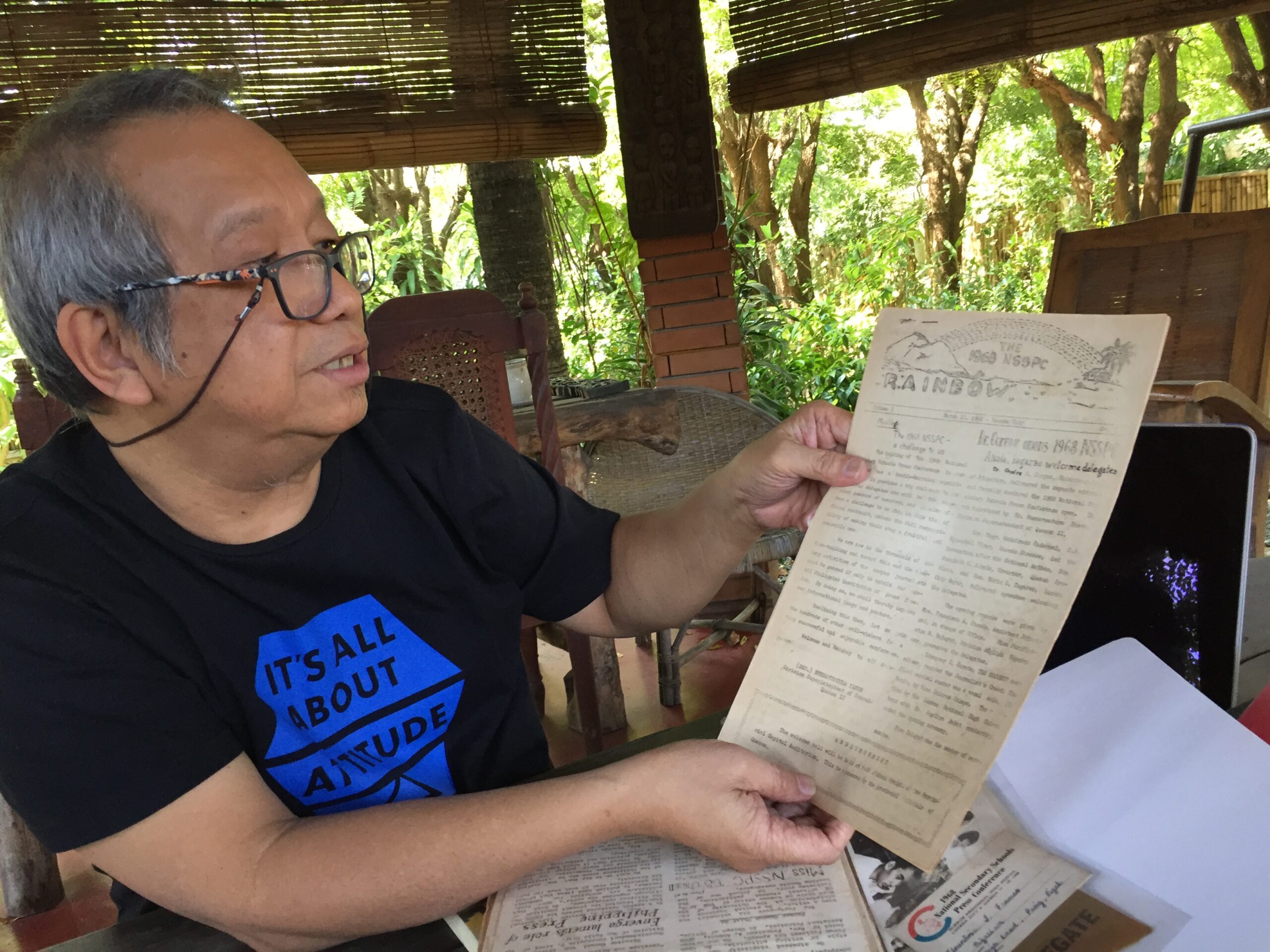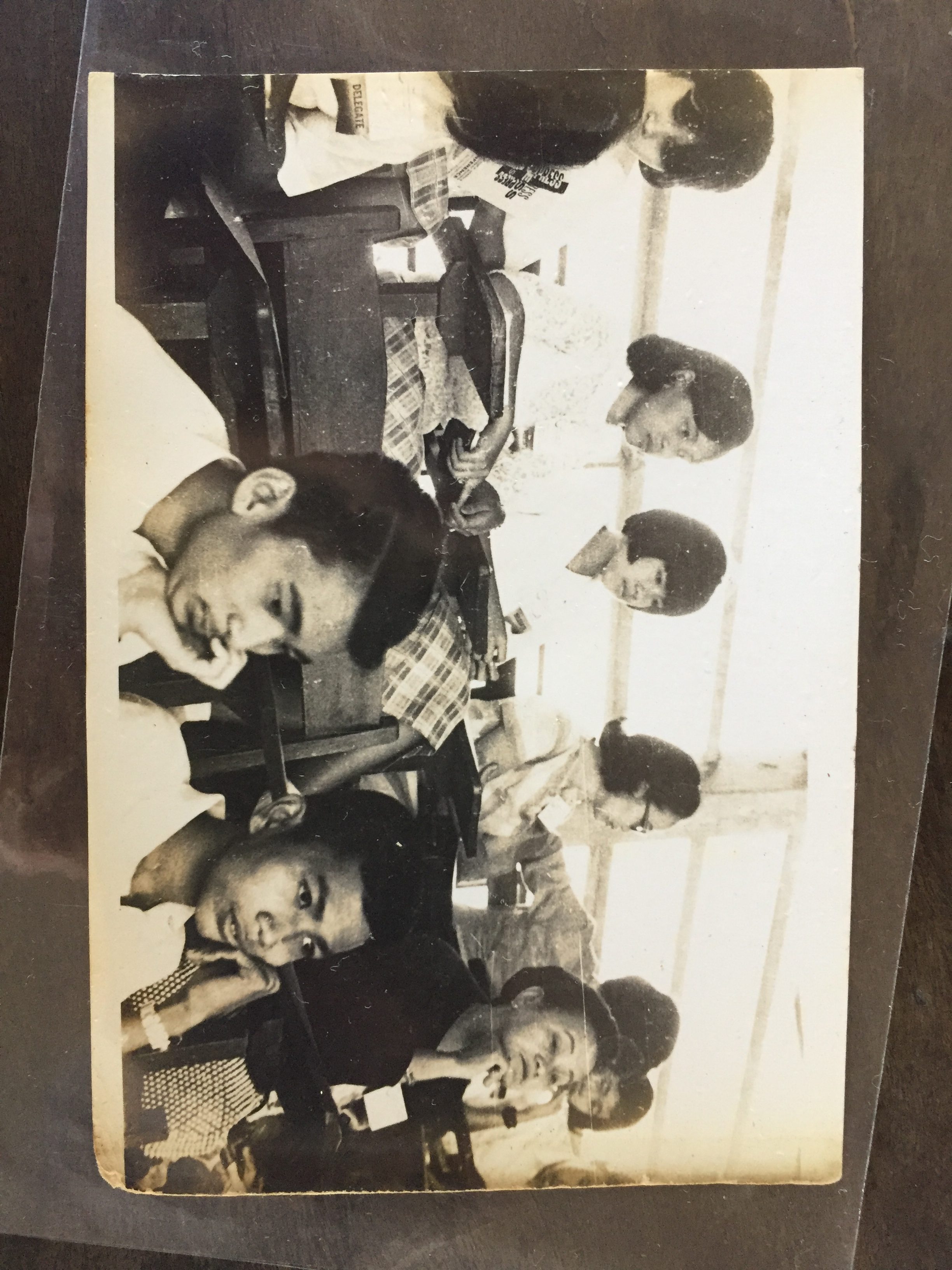SUMMARY
This is AI generated summarization, which may have errors. For context, always refer to the full article.

MANILA, Philippines – With the 2018 National Schools Press Conference (NSPC) fast approaching, campus journalists around the country are already preparing for what they consider a very important competition in their youth.
To prop up contestants for the rigid competition ahead, regional delegations are holding their own enhancement trainings, with some lasting for a week.
But for Perfecto Martin, competition is not what NSPC should mainly focus on.
Martin was the News Writing champion of the 1967 National Secondary Schools Press Conference (NSSPC) in Butuan.
When the competition was held in Lucena, Quezon the following year, he emerged as the 3rd placer in Feature Writing. Martin was then representing The Republic, a student publication of Marcelo H. Del Pilar National High School in Malolos, Bulacan.
An award-winning campus journalist when he was younger, Martin told Rappler in an interview that the state and quality of campus journalism was far different back then compared to what it has evolved into at present.
“During our time, our school paper adviser makes sure that every week, all publication staffers should submit an article, usually about school issues,” said Martin, who is now a book publisher.
He added: “The weekly routine became our practice. From there, our school paper adviser gets materials for the school publication.”
Today, Martin pointed out that campus journalists and school paper advisers dedicate practice time only when the competition is around the corner. In addition, the production of student publications only happens once a year.
According to Martin, this creates a competition-fueled mindset, pushing students to focus on the event instead of telling relevant stories of their communities. (READ: Campus journalists say press freedom is everyone’s battle)
“Campus journalists came from the best students in school, but being the best is not measured by how many trophies and medals he or she [has] achieved for the school. Campus journalism is more than just a competition,” Martin emphasized.
Stepping stone
Martin admitted that what he learned from campus journalism paved the way for him to pursue his career in writing.
In college, he was a member of the Ateneo de Manila University’s The Guidon. He also served as the culture section editor of the Philippine Collegian when he transferred to the University of the Philippines-Diliman.
As a professional, Martin worked alongside Virgilio Almario, Charles Funk, and Victor Jose Peñaranda – the original team that created the Aklat Adarna series for the Nutrition Center of the Philippines.
In 2017, Martin launched his anthology book about the history of history of Bulacan High School – now Marcelo H. Del Pilar National High School – containing copies of The Republic issues dating back as far as pre-World War II era. (READ: Does the Campus Journalism Act protect press freedom?)
Getting inspiration from his anthology book, Martin urged campus journalists to be the history keepers of their own schools and communities.
For Martin, each school’s history contains interesting stories of the community, and if compiled properly, will immortalize the people behind those stories.
“It is every campus journalist’s duty to tell the stories of today so that it will be remembered in the future,” Martin said.
For him, this will only be possible if student publications will publish at least every 2 months. (READ: Campus journos ‘disappointed’ over DepEd’s termination of partnership with Rappler)
He said school paper advisers can take advantage of the regular publishing of the student publication as training sessions of their campus journalists – that is, if students are given appropriate feedback on what to improve.
“When you get used to what you’re doing, you don’t need to be trained anymore whenever competition is near. In fact, retention is better when you’re doing it regularly,” he said. (READ: Why campus journalists should go beyond classrooms)

Diversifying campus journalism
According to Martin, if campus journalists act as storytellers, they could really impact change in their community.
“With the available technologies today, the opportunities for campus journalists are endless,” he said.
He also encouraged campus publications to set up social media pages. This way, students can get school-related information instead of reading “secret files” pages that are popular on Facebook.
“One should know the difference between a campus writer and campus journalists. When you’re a campus journalist, you write with purpose,” he ended.
Dubbed as the Olympics of Campus Journalism, NSPC is set to gather the best student journalists in the country.
The 2018 leg of the program led by the Department of Education will be held in Dumaguete City from February 19 to 23. — Rappler.com
Add a comment
How does this make you feel?
There are no comments yet. Add your comment to start the conversation.